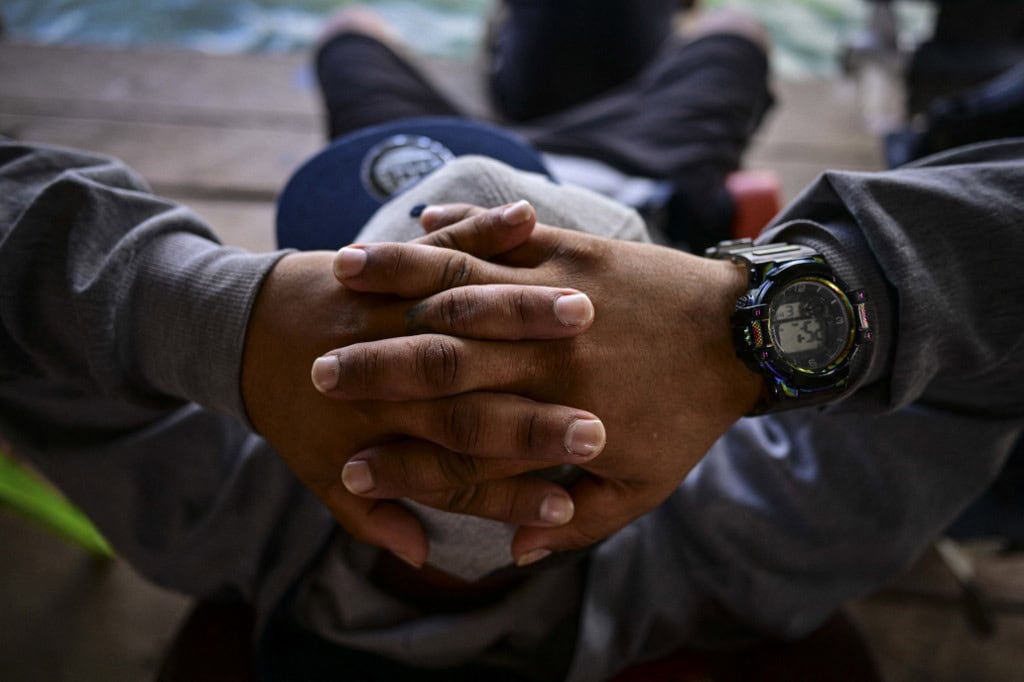Saudy Palacios crossed the dangerous Darién Gap jungle, on the border between Panama and Colombia, with the dream of reaching the United States, having a job, a home, and educating her son. Now she returns to Venezuela by sea with “broken dreams” due to President Donald Trump’s migration policy.
Hundreds of migrants, many of them children, are boarding boats these days in Cartí, in the indigenous region of Guna Yala, on Panama’s Caribbean coast. They are heading south, a journey of about 12 hours to the port of Necoclí, in Colombia, and then continuing by land, most of them to Venezuela.
They seek to bypass land controls that unsuccessfully try to manage the reverse migration flow and, above all, to avoid crossing the Darién jungle, which many traversed a few months ago when heading north and where they managed to survive criminal gangs and jungle dangers.
But the danger doesn’t disappear. An eight-year-old Venezuelan girl died on Friday when one of these boats with about twenty migrants capsized. Among the migrants, disillusionment and sadness prevail. Since arriving at the White House, Trump has applied a tough policy against migrants, with raids and deportations of people in irregular situations to different countries and even to the US base at Guantánamo, in Cuba.
He also eliminated the CBP One mobile application that allowed migrants to schedule appointments to request asylum. “That’s already dead. There’s no American dream anymore. I waited nine months for the appointment, and one gets tired. There’s no hope anymore. Nothing,” said Palacios, 27. She was returning from Mexico with her 11-year-old son and her husband.
Along with other migrants, they were waiting for the boat at the rickety dock of Cartí Sugdupu, an island where most inhabitants were relocated to the mainland last year because in the future it will be underwater due to climate change. In Cartí, Palacios and her family, who have spent more than 2,000 dollars just on the return journey, are waiting for their relatives in Venezuela to send them the 250 dollars to pay for the boat.
The Worst in My Life
They come mostly from Mexico, without documents and in debt after spending between 5,000 and 10,000 dollars on the trip. They have slept in shelters or on the street, gone hungry, and sold candies at traffic lights to barely eat and pay for buses or boats back to their countries.
When Astrid Zapata arrived from Mexico with her husband, her four-year-old daughter, and a cousin a few days ago at La Esperanza shelter in Costa Rica’s capital, the first thing she did was hang the Venezuelan flag in the small cubicle where they would sleep. “There’s no future in the United States anymore. But I’m afraid. In this return, it’s very hard to enter the jungle again. A mother lost two children there; I saw them drowned in the river,” she said at that non-governmental shelter.
Venezuelan Karla Peña, 37, her two-year-old baby, her daughter, her son-in-law, and a grandchild were among the 300,000 migrants who crossed the Darién in 2024. The jungle “was the worst in my life,” she says in a shelter in Tegucigalpa where they arrived from Mexico a couple of weeks ago.
“Going backward is tough. It’s been hard because we come from country to country, without passports, and now to think that ahead awaits the jungle or a boat,” she lamented. But for these women and their families – part of the exodus of eight million Venezuelans over the last decade – staying in Mexico was not an option: criminal gangs kidnapped them, demanded payments to release them, and that also led them to undertake the return journey.
Starting from Zero
Some get left behind on the way. María Aguillón left in December from a small town in southern Ecuador with her husband, three children, and three grandchildren. “We had to leave because there’s a lot of killing; I had lost a son,” she said, sobbing at the shelter in San José.
They crossed the Darién, but her husband was deported from Panama and she continued with the rest. She wanted to reach the United States to reunite with two other children who live there, but she couldn’t. Today, this 48-year-old woman is trying to find a job in Costa Rica to restart a life with her family.
“Starting from zero,” summarizes Yaniret Morales at the shelter in Tegucigalpa. This 38-year-old mother returns with her 10-year-old daughter to Venezuela, but only “to gather some money and emigrate to another country,” no longer to the United States.
Although Central American governments say they are making efforts to organize reverse migration, there is chaos. Panama and Costa Rica confine migrants in shelter centers in remote border areas. “They promised humanitarian flights and nothing. Pure lies,” says Palacios. “We return with broken dreams to our country.”








